KaiserM715
Kaiser Söze
Top 10 Must-Have Items For Your Off-Road Vehicle : Off-Road.com
You’ve heard of David Letterman’s Top 10 list. I have one as well. But instead of poking fun at someone or something, my list is serious. It’s designed to prepare you and your vehicle for off-road driving. While these are ranked in order of importance, you should consider all recommendations to be critical to safe and successful four-wheeling.
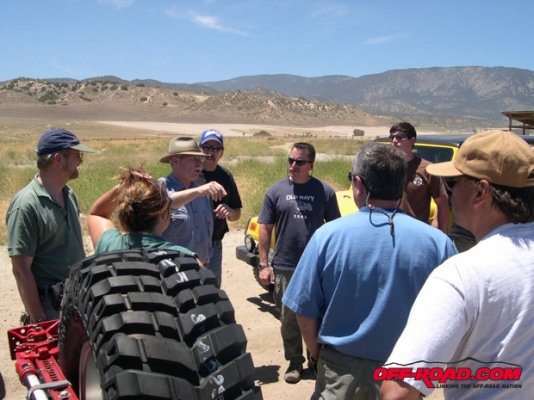 Tom Severin teaches a group during an off-road training course.
Tom Severin teaches a group during an off-road training course.
1. Training
Everyone should take at least a basic off-road course from an instructor certified by the International 4-Wheel Drive Trainers’ Association. In those courses you cover a number of important topics, including safe four-wheel drive techniques, vehicle safety, trail etiquette, and environmental awareness. To find a certified training facility near you, visit the association website at I4WDTA - The International 4-wheel Drive Trainers Association.
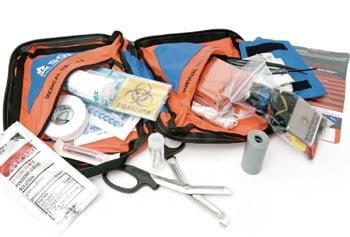
2. Safety
Four-wheeling by its nature is done in hostile environments. At a minimum you can get some bumps and bruises. Cuts and sprains are possible too; even bug bites. A good first aid is comprised of at least four categories of products: tools, meds, wound care, and fracture kit, all stored in a water-proof container. I also highly recommend you take a Wilderness First Responder course. They pack a lot of good information into the 72-hour course, such as how to deal with dislocations, severe cuts, anaphylaxic shock, and even fractures. To find a course near you, go to Wilderness Medical Associates.
Finally, make sure you have a good fire extinguisher in your vehicle. I suggest an ABC-rated 3 lb. rechargeable extinguisher with a gauge and a metal nose on it. (A plastic nose will break off.) Mount it where it’s accessible quickly and visible but secure so it’s not bouncing around in the vehicle.
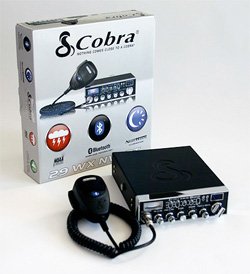
3. Communication
You need to stay in touch while on the trails. CB is really popular out there. There are lots of brands and models to choose from, but I’ve heard good things about Cobra brand radios (Off-Road.com recently installed a small hand-held Cobra unit here). You could also consider getting licensed as a ham radio operator. That would give you access to more radio frequencies, which extends your options. Regardless of the route you go, make sure you mount your equipment well. Off-road driving creates a lot of vibration inside the vehicle, which affects any equipment you are carrying.
If you decide on CB, buy the standard ¼-wave antenna. Those long whip-like antennas you sometimes see are not practical off-road, and in fact can be quite dangerous.
4. Recovery Strap and Tow Point
Have a 20,000-pound-rated strap (ultimate breaking strength) with loops sewn in the ends as opposed to metal hooks. Remember that this is a recovery strap, not a towing strap. They’re two inches wide and available in 20- and 30-foot lengths. I usually buy one of each to give myself options on distance. But you can get by with one, to start.
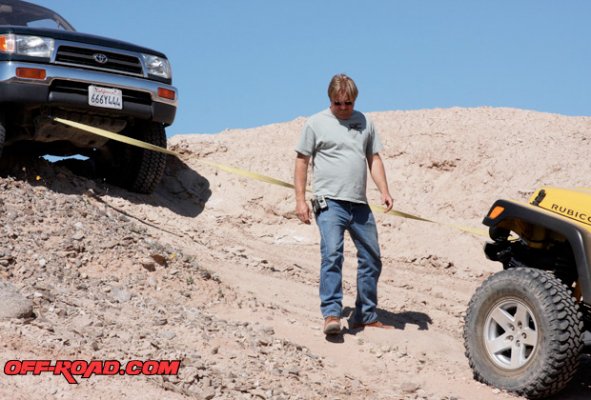
Tow points should be integrated into the vehicle frame if it doesn’t already have towing hooks on the front and back ends. Go to a reputable shop, and make sure the tow points are rated for the gross vehicle weight (GVW).
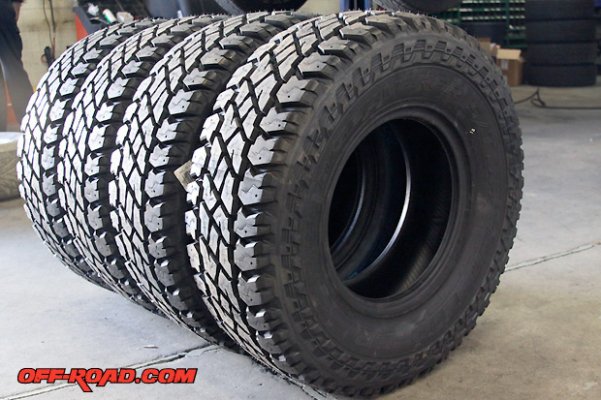
5. Tires
Replace the passenger tires with a good set of all-terrain or mud-terrain tires suited to your vehicle. Those provide better performance and hold up much better off road. Drive your vehicle for at least a year before making major modifications, such as adding traction control aids, bigger tires, and other mechanical aids. This way you will develop your driving skills.
6. Tire Kit
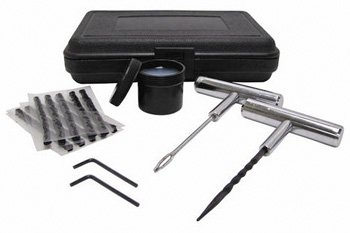
Included in a kit should be a good tire gauge (one that reads from 0-60 in 1 lb. increments), a deflator, and a plug kit. Tires, as you can image, take a pounding on many trails, so you must be able to plug small cuts and holes.
Also, get the Trail Head automatic deflators. They can be set for your desired pressure and will stop automatically when they reach that pressure. For more information, go to Trailhead Deflators.
7. Hi-Lift Jack
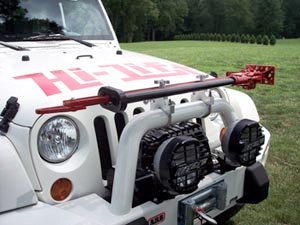
Extremely useful for off-road recovery and tire repair. A stock jack just won’t cut it. The only drawback is that the nose (lifting point) is straight and flat, so it does not work with curved or round bumpers. But, adapters exist that work with curved bumpers. For more, visit Hi-Lift.com.
8. Winch and Accessories
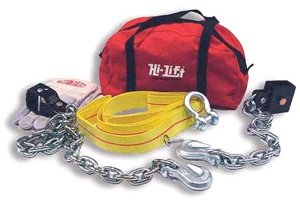
A winch is not absolutely necessary, but it provides peace of mind on the trail. I prefer that you spend your money on a winch rather then on lockers, lift, etc. until you have honed your driving skills. When it’s time, get one that’s rated at least 1.5 times the GVW. Mount it so the bumper does not obscure a clear view of the full top of the winch.
You’ll need a winch kit, also. At a minimum this kit includes a tree strap, pulley, two D-rings—I recommend four—and a pair of gloves. The pin inside the D-rings (often called a clevice) should be at least ¾”. Any brand will do; all manufacturers sell quality winch kits.
9. Air Compressor
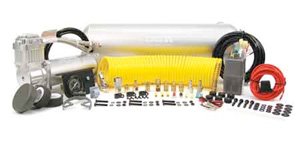
There are various options. Some fit in a bag, others can be installed permanently and mounted to the vehicle. Get one that taps directly into the vehicle battery. Those designed to be plugged into the cigarette lighter take too long to operate. Other alternatives are CO2 tanks and engine drive compressors. A really neat product is the “dual force,” a combined winch and compressor from Warn.
10. Vehicle repair tools
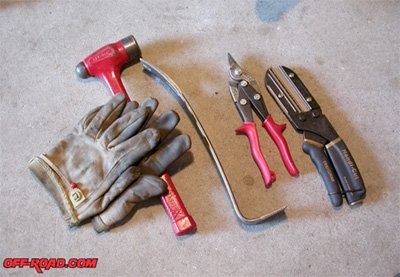 There are quite a few useful tools for the trail. Make sure you pack accordingly.
There are quite a few useful tools for the trail. Make sure you pack accordingly.
A basic tool kit is fine. But be sure to include the 4-wheeler’s ultimate tool, a BFH (Big Frickin’ Hammer). As they say on TV, don’t leave home without it
You’ve heard of David Letterman’s Top 10 list. I have one as well. But instead of poking fun at someone or something, my list is serious. It’s designed to prepare you and your vehicle for off-road driving. While these are ranked in order of importance, you should consider all recommendations to be critical to safe and successful four-wheeling.
 Tom Severin teaches a group during an off-road training course.
Tom Severin teaches a group during an off-road training course. 1. Training
Everyone should take at least a basic off-road course from an instructor certified by the International 4-Wheel Drive Trainers’ Association. In those courses you cover a number of important topics, including safe four-wheel drive techniques, vehicle safety, trail etiquette, and environmental awareness. To find a certified training facility near you, visit the association website at I4WDTA - The International 4-wheel Drive Trainers Association.

2. Safety
Four-wheeling by its nature is done in hostile environments. At a minimum you can get some bumps and bruises. Cuts and sprains are possible too; even bug bites. A good first aid is comprised of at least four categories of products: tools, meds, wound care, and fracture kit, all stored in a water-proof container. I also highly recommend you take a Wilderness First Responder course. They pack a lot of good information into the 72-hour course, such as how to deal with dislocations, severe cuts, anaphylaxic shock, and even fractures. To find a course near you, go to Wilderness Medical Associates.
Finally, make sure you have a good fire extinguisher in your vehicle. I suggest an ABC-rated 3 lb. rechargeable extinguisher with a gauge and a metal nose on it. (A plastic nose will break off.) Mount it where it’s accessible quickly and visible but secure so it’s not bouncing around in the vehicle.

3. Communication
You need to stay in touch while on the trails. CB is really popular out there. There are lots of brands and models to choose from, but I’ve heard good things about Cobra brand radios (Off-Road.com recently installed a small hand-held Cobra unit here). You could also consider getting licensed as a ham radio operator. That would give you access to more radio frequencies, which extends your options. Regardless of the route you go, make sure you mount your equipment well. Off-road driving creates a lot of vibration inside the vehicle, which affects any equipment you are carrying.
If you decide on CB, buy the standard ¼-wave antenna. Those long whip-like antennas you sometimes see are not practical off-road, and in fact can be quite dangerous.
4. Recovery Strap and Tow Point
Have a 20,000-pound-rated strap (ultimate breaking strength) with loops sewn in the ends as opposed to metal hooks. Remember that this is a recovery strap, not a towing strap. They’re two inches wide and available in 20- and 30-foot lengths. I usually buy one of each to give myself options on distance. But you can get by with one, to start.

Tow points should be integrated into the vehicle frame if it doesn’t already have towing hooks on the front and back ends. Go to a reputable shop, and make sure the tow points are rated for the gross vehicle weight (GVW).

5. Tires
Replace the passenger tires with a good set of all-terrain or mud-terrain tires suited to your vehicle. Those provide better performance and hold up much better off road. Drive your vehicle for at least a year before making major modifications, such as adding traction control aids, bigger tires, and other mechanical aids. This way you will develop your driving skills.
6. Tire Kit

Included in a kit should be a good tire gauge (one that reads from 0-60 in 1 lb. increments), a deflator, and a plug kit. Tires, as you can image, take a pounding on many trails, so you must be able to plug small cuts and holes.
Also, get the Trail Head automatic deflators. They can be set for your desired pressure and will stop automatically when they reach that pressure. For more information, go to Trailhead Deflators.
7. Hi-Lift Jack

Extremely useful for off-road recovery and tire repair. A stock jack just won’t cut it. The only drawback is that the nose (lifting point) is straight and flat, so it does not work with curved or round bumpers. But, adapters exist that work with curved bumpers. For more, visit Hi-Lift.com.
8. Winch and Accessories

A winch is not absolutely necessary, but it provides peace of mind on the trail. I prefer that you spend your money on a winch rather then on lockers, lift, etc. until you have honed your driving skills. When it’s time, get one that’s rated at least 1.5 times the GVW. Mount it so the bumper does not obscure a clear view of the full top of the winch.
You’ll need a winch kit, also. At a minimum this kit includes a tree strap, pulley, two D-rings—I recommend four—and a pair of gloves. The pin inside the D-rings (often called a clevice) should be at least ¾”. Any brand will do; all manufacturers sell quality winch kits.
9. Air Compressor

There are various options. Some fit in a bag, others can be installed permanently and mounted to the vehicle. Get one that taps directly into the vehicle battery. Those designed to be plugged into the cigarette lighter take too long to operate. Other alternatives are CO2 tanks and engine drive compressors. A really neat product is the “dual force,” a combined winch and compressor from Warn.
10. Vehicle repair tools
 There are quite a few useful tools for the trail. Make sure you pack accordingly.
There are quite a few useful tools for the trail. Make sure you pack accordingly. A basic tool kit is fine. But be sure to include the 4-wheeler’s ultimate tool, a BFH (Big Frickin’ Hammer). As they say on TV, don’t leave home without it

